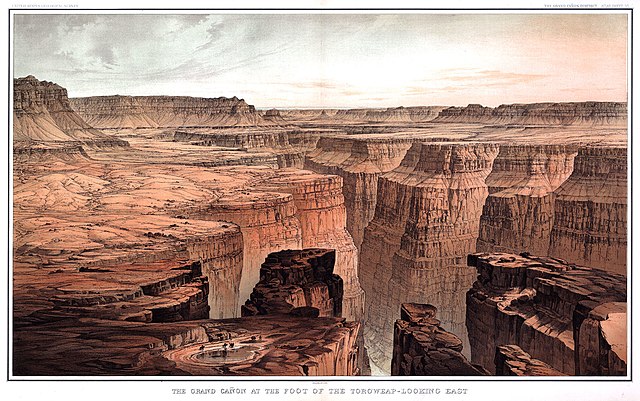History of the Grand Canyon area
The known human history of the Grand Canyon area stretches back 10,500 years, when the first evidence of human presence in the area is found. Native Americans have inhabited the Grand Canyon and the area now covered by Grand Canyon National Park for at least the last 4,000 of those years. Ancestral Pueblo peoples, first as the Basketmaker culture and later as the more familiar Pueblo people, developed from the Desert Culture as they became less nomadic and more dependent on agriculture. A similar culture, the Cochimi also lived in the canyon area. Drought in the late 13th century likely caused both groups to move on. Other people followed, including the Paiute, Cerbat, and the Navajo, only to be later forced onto reservations by the United States Government.
Foot of Toroweap Looking East by William H. Holmes (1882). Artwork such as this was used to popularize the Grand Canyon area.
Split-twig figurine from the Grand Canyon
Ancestral Pueblo food storage building ruins at Tusayan Pueblo
The 54-foot (16 m) paddle wheeler Explorer in the Lt. Joseph Ives expedition up the Colorado River. Period engraving.
The Grand Canyon Railway is a heritage railroad which carries passengers between Williams, Arizona, and the South Rim of Grand Canyon National Park.
Grand Canyon Railway 4960 on a special run for photographers pulling freight cars, 2011
Williams Depot
Inaugural run, September 1901
Steam locomotives GCRX 29 and 4960 in a rare joint appearance at Grand Canyon Depot, 2005.








